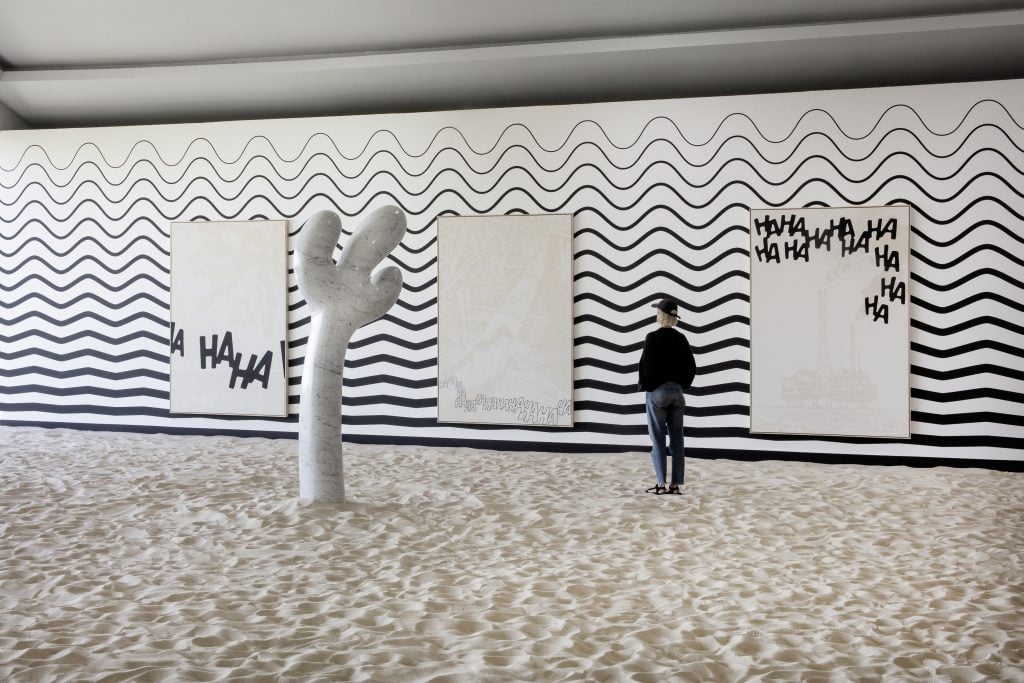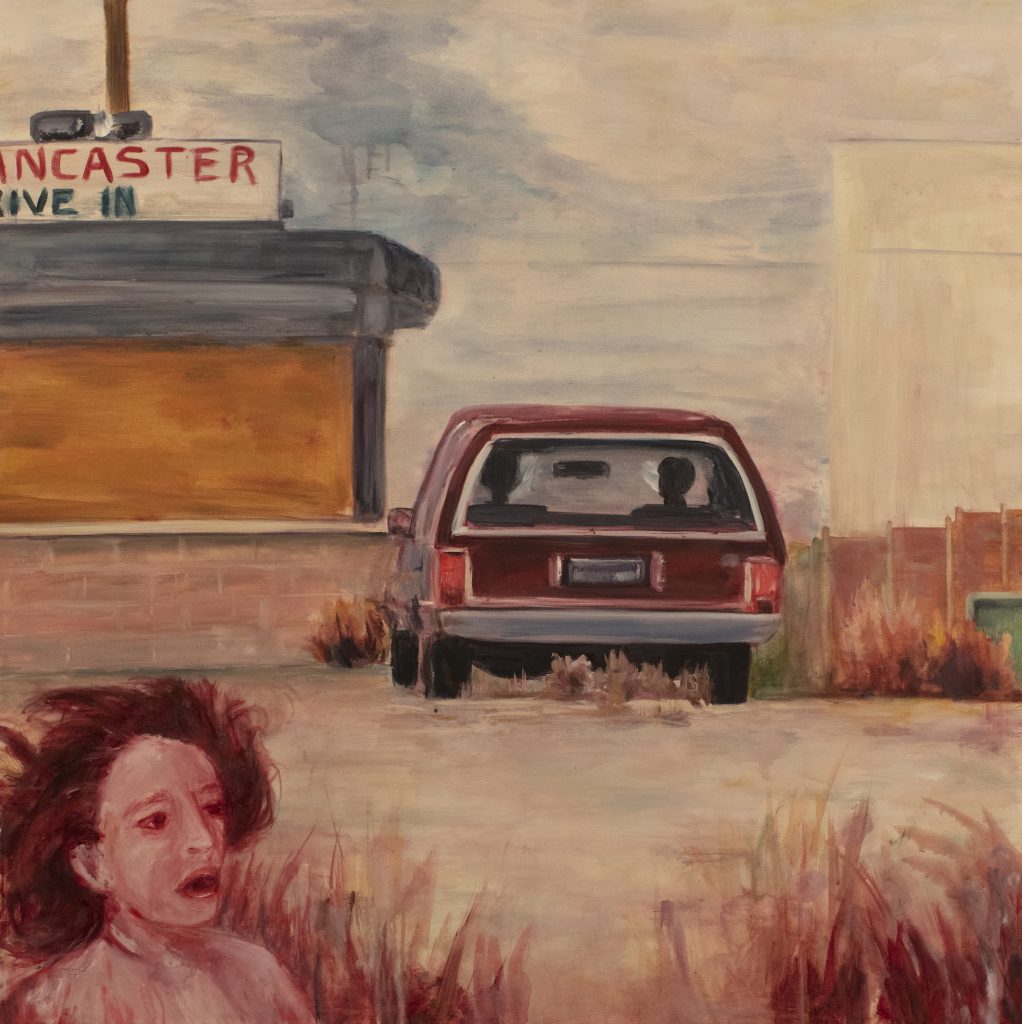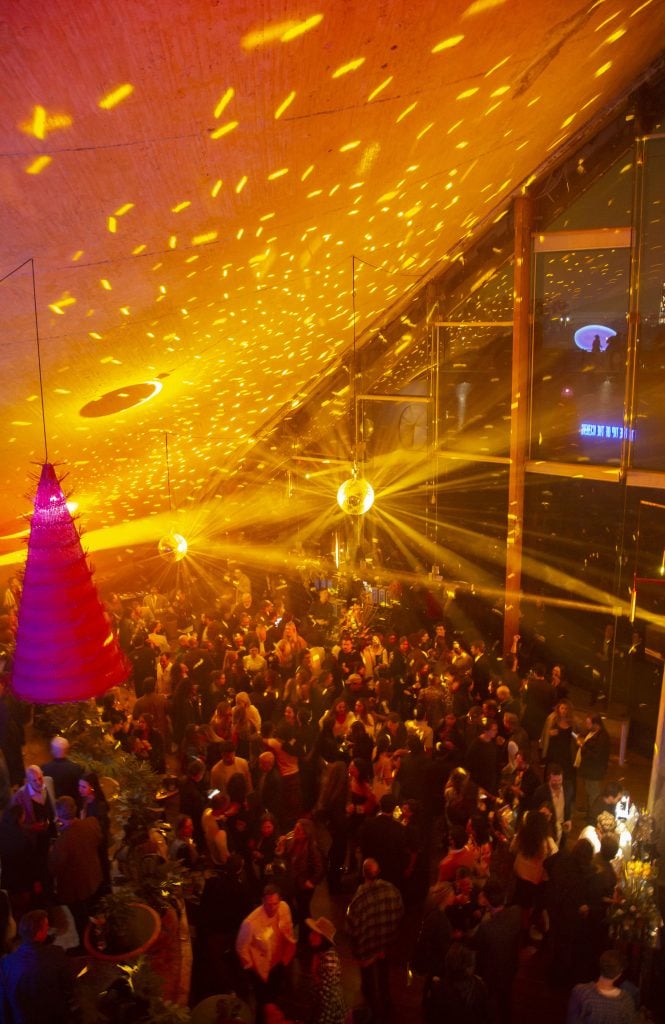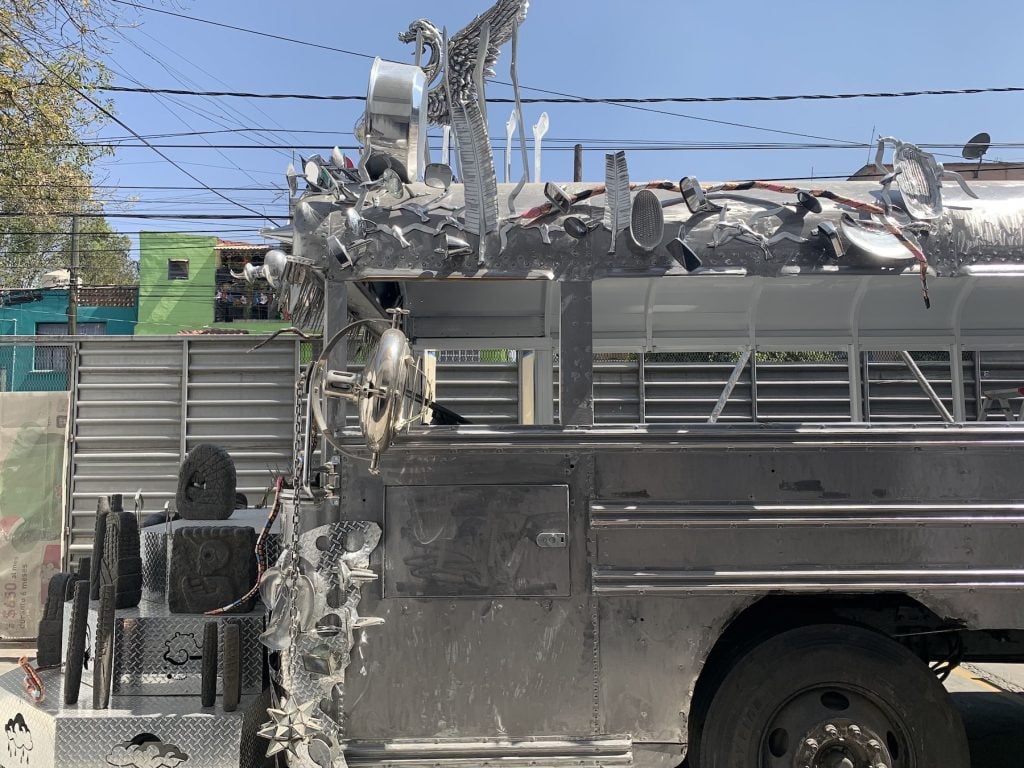Art Fairs
Here’s What It Feels Like to Visit Mexico City’s Dizzying Art Week, Where No One Is Immune From the FOMO
We went behind the scenes at Zona Maco and its rich array of orbiting events.

We went behind the scenes at Zona Maco and its rich array of orbiting events.

Kimberly Kruge

To walk around Mexico City on any given day is to experience art. While many gems are held behind the metropolis’ gallery and museum doors, one unique trait of the city is that it prizes the public realm: Mathias Goeritz’s stained glass in churches, an Isamu Noguchi mural in a marketplace, a David Alfaro Siqueros relief on a public university wall. The list goes on—and almost to an overwhelming extent for anyone who hopes to experience it all.
This effect only intensifies during Zona Maco. The art fair at the Citibanamex Center is massive in and of itself, and there are so many satellite events that even the most industrious visitor may suffer from a certain fear of missing out. And with the week’s expanded art offering comes another challenge: what is already one of the world’s largest cities receives a population boost, densifying traffic and lengthening lines. The consequence is that no one can do it all, and every art lover’s trajectory becomes a game of Choose Your Own Adventure.
My journey started on Tuesday, the eve of the main fair, with a spot of gallery hopping. I began at JO-HS, a residency space and art consulting firm founded by Elisabeth Johs in a serpentine building with airy openings lending natural light to a group show entitled “Collective Imagination.” Of the show’s title and space itself, Johs affirmed that “it takes a collective to have a collective imagination,” and the work from artists like Floria González, Pedro Assam, Neil Hamamoto, and Julien Heintz demonstrates this communal spirit. One of Hamamoto’s works, for example, is partly composed of “sell-by” stickers, touching on a recurring theme of the week: the specter of collective expiration.

Courtesy of Floria González.
I was fortunate enough to bump into Floria González at the JO-HS opening, whose unnerving paintings also needle at the uncertainty of the future and humanity’s potential demise. My interaction with the artist would be the first of many. A few blocks away, at the Kurimanzutto, Iranian-German sculptor Nairy Baghramian—whose show Modèle Vivant challenges ideas of figurative art in abstract metal shapes—greeted visitors with tight hugs. After taking in the show, invited guests were prompted to head into the garden for a meal at shared tables.
From there, the night took me to OMR, a gallery in the city’s trendy Roma neighborhood, and the temporary site of Alicja Kwade’s Silent Matter, which inquires at conceptions of space and time in stone mobiles and pieces formed from rows of clock hands. The carbon-friendly show (Kwade made much of the work using local materials and in collaboration with Mexican artisans) drew a massive crowd that spilled up onto the gallery’s landscaped roof.
As the night darkened yet seemingly never grew even a degree colder, I walked to the Bucareli zone’s Karen Huber Gallery to spend time with Miguel Ángel Ríos’ paintings and drawings. I might have missed the door were it not for an ebullient group of art viewers on the sidewalk. Their excitement carried upstairs into Ríos’ show, which featured work that questions the concept of borders. The crowd’s appreciation was evident, the artist receiving a fervent round of applause from attendees, who arrived in throngs until close.

BEVERLY’S at MATERIAL 2023 featuring work by artists – Alma Saladin Marco Rountree Azikiwe Mohammed Alexandra Hammond Leah Dixon Heidi Norton Carlos Rosales-Silva Jack Henry Virginia L. Montgomery with a special selection of works from Co-Lab Projects featuring work by – Yeni Mao Adrian Aguilera and Betelhem Makonnen CC Calloway.
Wednesday morning, a quiet fell over the gallery-centric zones of the city—Maco-goers perhaps resting after openings, making their way to the Citibanamex Center, or preparing for the Material Art Fair, an expo gathering another 50+ galleries. I spent the morning with Teresa Serrano’s feminist art installation—an affecting display of sculptures in materials from glass to plants—at Museo Universitario del Chopo before heading to the evening’s gala at LagoAlgo, situated in the wooded landscape of Bosque Chapultepec.
The restaurant-cum-gallery-space houses a group show from Claudia Comte, SUPERFLEX, and Gabriel Rico (curated by Jérôme Sans and Cristobal Riestra) that’s clear-cut climate change commentary. Sans says the show “invites us to consider Earth as a whole, a complex system with multiple interacting parts,” and the exhibition reflects that relationship.
After passing through Rico’s pictorial timeline of humanity and padding across Comte’s somber, sandy desert, visitors entered SUPERFLEX’s room, flooded by a trick of the light and centered around a large text work reading “we are all in the same boat.” Post-opening, the crowd moved downstairs to a jam-packed reception reminiscent of the second sequence of Paolo Sorrentino’s La Grande Bellezza.

Courtesy of LagoAlgo. Photo by Alum Gálvez Moreno.
On Thursday, visitors ambled around the opening of Brazilian sculptor Erika Verzuitti’s and French multidisciplinary artist Elsa-Louise Manceaux’s sensual shows (Tantra and Orgasmos en el fondo, respectively) at the Eco Experimental Museum before heading to the Material Art Fair. The fair, whose stylized social media handle reads “mmmmmaterial” and tagline roughly translates to “art is delicious,” housed delectable selections from the world’s leading independent galleries, like the NYC-based, artist-run exhibition space BEVERLY’S.
At BEVERLY’S stand, I ran into Chicanx painter Carlos Rosales-Silva, whose work was on display and who shared my feeling about the week’s events, saying, “it felt like the city was intensely culturally activated in an exciting way.” “Intense” and “activated” are apt descriptors that would carry into Friday. I spent time at openings in la Colonia Juárez (a district with a booming design scene) and among working artists, notably multidisciplinary architect Carlos Candia, whose emotionally- and intellectually-driven concrete poems and analog photographs are on display at the conscientiously-curated Selección Marsella.
As is the case with weeks like this one, there’s much more to relate. The FOMO carries into even the retelling of events, so I’ll nod to my brief yet fulfilling stops at mother-son duo Marusela Granell and Manuel Bano’s furniture and painting show at Colima 112, a reverberant intervention by SOUND+ in a vacated Roma mansion, and UNNO Gallery’s temporary sculpture patio at UNAM, which featured a volcanic rock and copper table from Ian Felton. I’ll also nod to the events that I, regrettably, had to miss: Gabriel Orozco’s guided tour of his public bridge connecting the two sections of Bosque Chapultepec and a brunch launching Alma Allen’s resplendent installation at Diego Rivera’s Anahuacalli Museum.
At the close of Maco, I reached back out to the Kurimanzutto gallery, asking with curiosity and empathy (everyone now beyond exhausted) how the week had gone. Sales Director Malik Al- Mahrouky reported “consistent and important sales from the Zona Maco booth and the exhibition at the gallery.” He lauded the great number of international museum groups and clients bringing attention to the “solid and healthy art community that Mexico City has to offer.”

Guadalupe Maravilla. Photo by Kimberly Kruge.
After hanging up, I found myself where it all starts, at the nucleus of art-making: the studio. Thanks to an invitation from the Institute of Contemporary Art/Boston, I met with Guadalupe Maravilla, who has been creating an installation for the ICA Watershed at the Panik workspace since August. Maravilla, an artist and sound healer who often works with cancer survivors and undocumented communities, is creating a vibrational energy vessel from a bus, removing the motor and installing gongs, volcanic sculptures, and materials (like forks and mirrors) collected from markets along the migrational route from El Salvador to the United States, which he took as an 8-year-old.
Maravilla has had not only a non-stop week but year, having activated 50 sound baths at MoMA, and 70 more at other sites in 2022. I left his studio, once again, with the sensation that I couldn’t do it all. But Maravilla’s tenacity reminded me that while Mexico City’s art week may be drawing to a close, the local art community’s abundant offering is hardly temporal. Here, art viewers feel invigorated all year round.